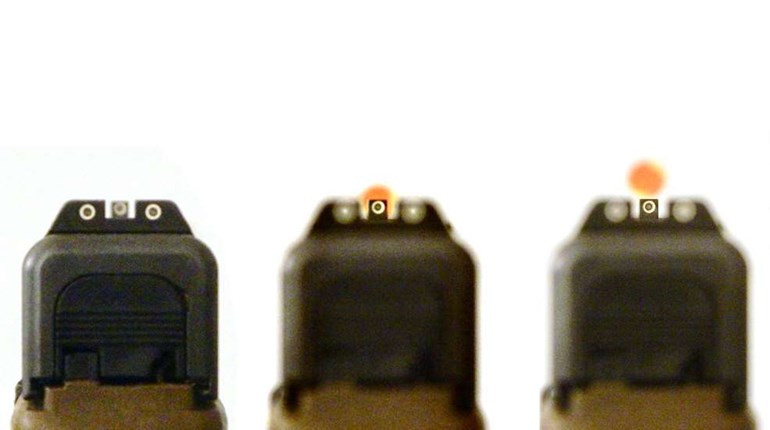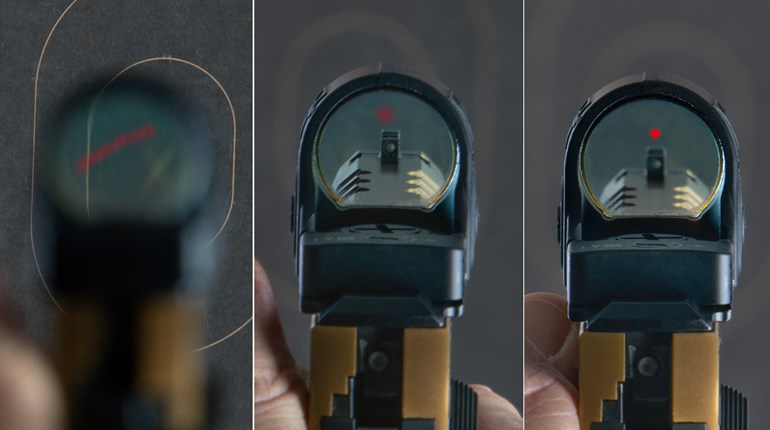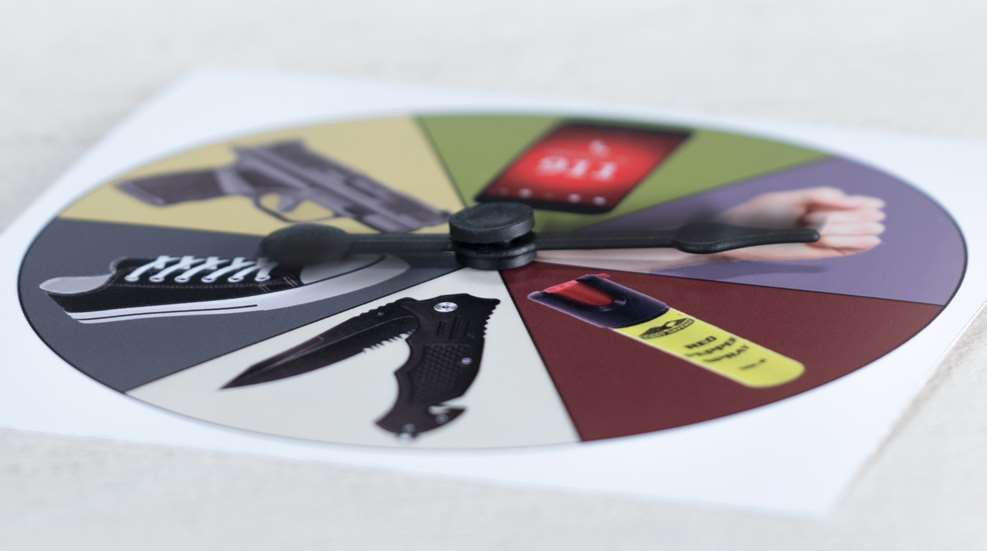
When it comes to a self-defense situation, most shooters think “Well, I’ll just shoot him!” Others may consider their personal “go-to” move to be a martial arts technique such as a finger strike to the eyes, bare-knuckle punch to the throat or kick to the groin. Regardless of what you believe you may pull off in a self-defense scenario, what is the reality of such reactive measures applied in a real-world, violent, physical altercation?
In today’s hyper-litigious society, your primary objective should be to avoid any violent physical encounters. Even if you act lawfully in self-defense, although found criminally justified you may be pursued in civil court for damages, incurring exorbitant legal fees. To avoid any or all of this, the consummate situational-awareness practitioner tries to stay ahead of the proverbial action/reaction power curve by applying proactive measures and remaining on the lookout for the earliest warning signs of a potential or active threat.
However, if you don’t hear it, see it, and/or smell it coming and you find yourself standing in harm’s way, then you no longer have an opportunity to apply proactive measures and are relegated only to reactive measures in response to a violent physical altercation.
The most common response option is to dial 911 and hope that your call is answered in a timely manner.
If you are unable to dial 911, then you are relegated to one of only three reactive measures—take flight, submit to your assailant(s) or fight your way out of the situation.
Take flight—that is, get out of there—means to create as much physical space between yourself and the threat as possible and in a timely manner. The advantages of taking flight are that you are not engaged in physical combat which (mostly) guarantees you will not be injured. More space buys you less injury potential, more time and more opportunity to solve the problem.
Surrendering or freezing in place means that there’s no way out, no possibility of fighting your way out and it’s your best possible response option given your situation. Case in point is a protection detail we were on in South America some years ago. The persons we were protecting had hired us to run a security evaluation on their residence because of an incident that had occurred prior. Following is a brief event synopsis:
A vehicle with our client, his wife and kids inside was forced to the side of the road by another car, then a second car pulled up in front of them and a third behind them in such a configuration that the family was boxed in, eliminating their flight options. Five assailants from each of the three vehicles all dismounted their respective cars armed with rifles and pointed their muzzles directly at the driver and his family, eliminating their fight option. The only remaining—and the healthiest—response option was to freeze in place. Luckily for the family, it was only a robbery and although relieved of valuables, no one was physically injured in the process.

Fighting your way out of the situation means that, with regard to response options, you have made the tactical decision to fight your way out as opposed to take flight or surrender.
Making this choice means you plan on using either your highly developed hand-to-hand combative skills or you have at least one weapon at your disposal and the proficiency to use it. Your decision to engage in extreme physical violence by deploying your hand-to-hand skills or weapon(s) such as a firearm or knife, even if you are completely successful, infers that you fully accept the personal risk (physical injury ranging from minor bruising to broken bones, to an unrecoverable injury, to loss of life,) and the criminal, civil and financial liabilities associated with such actions.
It’s a serious decision, so it must be a serious situation. If it’s that serious a situation, then you’re probably going to need a failsafe response option with which you could entrust your life and the lives of those who may be with you. A common term for such a response option is your “go-to move.”
Your go-to move options can range from non-lethal to lethal force. The most common non-lethal force options include empty hand (defensive tactics or martial arts), pepper spray, stun gun and the like.
Empty hand response refers to any physical technique where you use only your body while holding nothing in your hands in self-defense against one or more opponents. In the realm of empty hand response there are three sources from which technique may be drawn. The first, and most traditional, is the martial arts or martial sciences.
As an example, you may hear common cultural references such as Chinese Martial Arts, Japanese Martial Arts, Korean Martial arts, Muay Thai (Thailand), Filipino Martial Arts (FMA), Brazilian Jiujitsu (BJJ) and the like. Another contemporary term most folks are familiar with is “mixed martial arts” (MMA) comprising excerpts from multiple martial-arts systems hailing from multiple origins combined to form a random study volume.
The term “Martial Science” refers to those martial-arts techniques utilized in practical application minus adorning traditional or “flowery” motion and pared down to their bare-basic “street level” or battlefield application. Examples of this would be those empty-hand systems adopted by the United States Marine Corps and the United States Army.
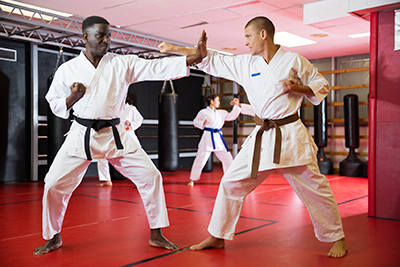
The focus of Marine Corps Martial Arts Program (MCMAP) is the personal development of each Marine in a team framework using a standardized, trainable and sustainable close-combat fighting system. All techniques are integrated with equipment, physical challenges and tactics found on the modern battlefield. The MCMAP is designed to increase the warfighting capabilities of individual Marines and units, enhance Marines’ self-confidence and esprit de corps and foster the warrior ethos in all Marines.
The United States Army developed the Modern Army Combatives Program (MACP), which was designed to improve unit combat readiness by building soldiers’ personal courage, confidence and resiliency, as well as their situational responsiveness to close-quarters dangers in the operational environment.
When it comes to law enforcement application of hand-to-hand combatives, the term “defensive tactics” is applied. Defensive tactics are those martial arts techniques which have been approved by a specific agency or department and further sanctioned by an accredited training entity such as a state Peace Officers Standards of Training. Such techniques have been signed off on by legal counsel and are mandatory per policy for use on duty. If you are a sworn peace officer and you employ something other than an approved agency or department issued defensive tactic while on duty, you could find yourself in hot water.
As a civilian considering use of a hand-to-hand technique, one must ask a few important questions: Have you completed the training in any one of these disciplines? If so, have you maintained your skills? All hand-to-hand skills are perishable and, like a second language or playing an instrument, must be periodically maintained.
Have you ever trained to jam your fingers into someone’s eye socket? Or trained to punch someone in the throat with your bare knuckles? Have you experienced multiple repetitions kicking someone in the groin? Have you ever actually done it on either another human being, or even a training dummy or punching bag? If not, then you have no business designating that technique as your go-to move. Instead, get some training, apply that technique in training and maintain that skill with sustainment training.
Another commonly accepted go-to-move is pepper spray. Sold in canisters of varying sizes, pepper sprays are derived from naturally occurring compound oleoresin capsicum (OC) found in peppers such as habanero and ghost peppers. If you plan to use pepper spray as your go-to, there are two important practical application aspects you should consider—legality and skill.
Legally, you do need to check if you can own and operate it in your state or county. Skills-wise, have you completed the training necessary for rapid deployment, retention (not have it taken away from and/or used against you) and to not spray yourself? Even though you may be trained in fundamental usage, do you have the skills for safe handling, carry, access, rapid deployment and operation while under duress?
Stun guns are another non-lethal go-to option. If you research them, you will find a countless array of makes and models. The one used by most law enforcement is the Taser, because it can be applied at a distance starting at 15 feet, whereas a traditional stun gun requires direct contact with another human being, referred to as a “drive stun.”
The Taser is available in versions for civilians. After checking for legality of ownership and use with your state and county laws, like any other tool, the stun gun requires both initial and sustainment training.
The most common lethal-force options may include a firearm, edged or impact weapon baton) or a weapon of opportunity.
Most first-time gun owners think they can simply buy a gun and their shiny new firearm will ward off all evil just by the virtue of ownership. Nothing could be further from the truth. It’s like buying a piano and with zero musical training or background and expecting to be a concert pianist.
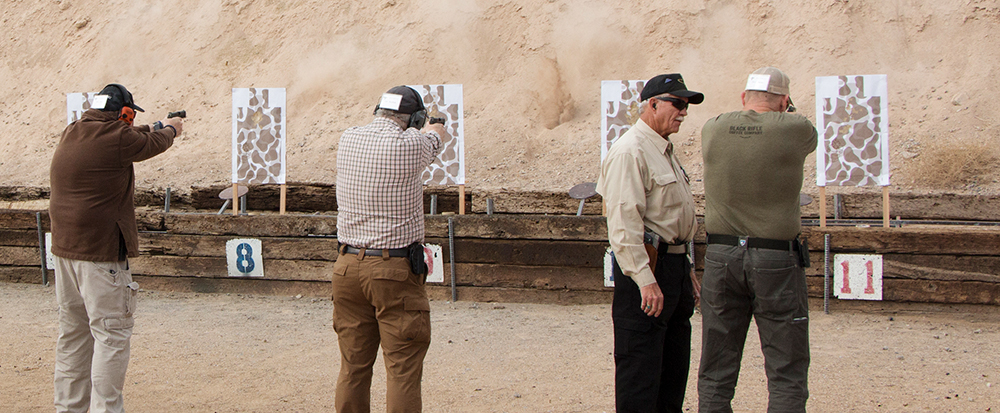
A firearm, like any other life-saving tool, requires extensive training. It is your responsibility to learn appropriate safety, storage and maintenance along with combat-effective gun-handling and marksmanship skills.
As with any weapon, it is incumbent upon the prospective owner to check with state and local laws referencing ownership and restrictions such as overall capacity.
Edged weapons, such as your folding- or fixed-blade knife in accordance with state and local laws, may be carried on your person and with appropriate training and practice, be utilized as a defensive weapon should you reasonably perceive a situation where you may be in fear for your life or limb. An edged weapon can be a formidable defensive tool in the hands of an experienced person, as most bad guys would rather be shot than flayed open with a razor-sharp knife blade.
Impact weapons like clubs, walking sticks, canes or expandable batons can all be used effectively for self-defense. A walking cane is considered a medical device and is legal to carry on an airplane and in any country where a gun and/or knife may not.
Expandable batons, although legal in some states, are illegal in others. Again, you are advised to check with state and local laws to ensure legality of possession and use.
Another lethal-force option is using a “weapon of opportunity,” a term applied to any technique not part of any system or formal program of instruction. Throwing a carpenter’s hammer, scalding-hot pot of coffee or a frying pan at someone to stop an active threat would be considered unconventional or usage of an “improvised weapon.”
Selecting your go-to move is such a critical, life-saving decision you want to make the right one. It doesn’t need to be just one, as some of the best practitioners in the industry recommend you have more than one. It is quite common for a trained expert to have the skills and tools ranging from bad-breath distance to all the way out beyond 200 yards.
Purchasing gear, getting training and sustaining your skills requires time and commitment. The serious practitioner will train with their go-to moves anywhere from once a month to once a week. Those who use it for their job like the military and law enforcement are required to practice more often), as the probability of them using it on the job is considerably higher than that of a civilian.
Regardless of your go-to move, check your local laws referencing gear purchase and usage, get some quality training, keep your performance skills up to par and utilize your situational awareness and other preventive measures so you may never need to use it.












